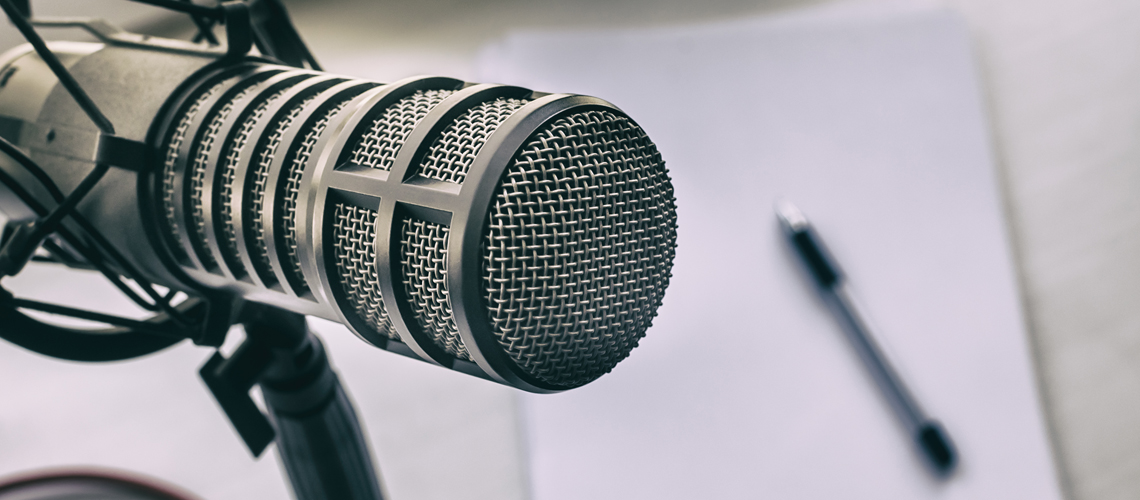Podcast technology as a tool for student engagement and learning, no matter the academic discipline

This blog post is part one in an ongoing series from English faculty member Nolde Alexius. Click here to read the second installment on creating assignments tailored to the podcast format.
Want to inspire students to engage in class discussions? To think critically about course material? To discover their personal investment in the course?
Consider a podcast.
That’s right. The news and entertainment technology popular for its intimate tone transfers nicely to academic conversations. In a podcast, students inform, question, and challenge both each other and a general audience as their unscripted conversation unfolds.
Students want to access the flow of ideas that will help them learn in your class. In a podcast, students can participate in an engaging, useful conversation on any topic of any level of difficulty with their classmates. Before they (and you) know it, they will be articulating their ideas about your subject matter from informed, enthusiastic positions.
The Technology
Two types of audio recording equipment are available to all students and faculty at LSU in CxC Studio 151, located conveniently on the quad in Coates Hall, Room 151.
Option 1: Portable recorders
Check-out a recorder kit in advance and be sure to test it out before you leave. Don’t watch someone else operate it and assume you will be able to figure it out.
TIP: During set-up of your recorder you may hear feedback. To eliminate feedback turn the volume down on the recorder. Wearing headphones, which are also available for check-out, during the recording is another way you can check your audio for feedback.
Option 2: Sound booth
Studio 151 is equipped with a sound booth that you and your students may reserve to record your podcast. Studio staff will provide instructions to you when you arrive.
Learn how to utilize LSU CxC Studio 151 technology for your podcast assignment.
Option 3: Mobile apps
If you’re more comfortable using your phone or laptop than new equipment, try a program like GarageBand or Audacity. The GarageBand app is a popular and accessible method of recording a podcast, but if you are a Windows user, Audacity is the way to go.
TIP: Consider whether you will use your phone for other purposes during the podcast recording. For example, are you using your phone to time the podcasts? If so, then this option may not be viable.
A podcast assignment offers students a new way of meeting important benchmarks of courses in every academic discipline. The technology allows you to take a giant step toward teaching a variety of skills students need to succeed in your course while requiring them to focus on any topic you believe is worthy of emphasis and discussion.
Offering your students an example of an existing podcast will go a long way toward guiding them to the type of conversation you have in mind. An effective model of a podcast incorporates both the skills and the subject matter you believe are important for your students to learn.
For my general education English course in which students write researched arguments, Stuff You Should Know, a podcast that features two researchers comparing the information they have gathered on a topic and engaging in a discussion aimed at a general audience, was the ideal model. In fact, the podcast itself helped me shape my podcast assignment’s learning outcomes: to develop appropriate expectations in students for the research process, to learn various methods of conducting research, to develop a topic, to evaluate the usefulness and credibility of research, to use persuasive appeals, to identify organizational patterns in their research, and more.
The podcast is the newest indispensable technology in my course. What’s yours? Let me know at nalexi1@lsu.edu.